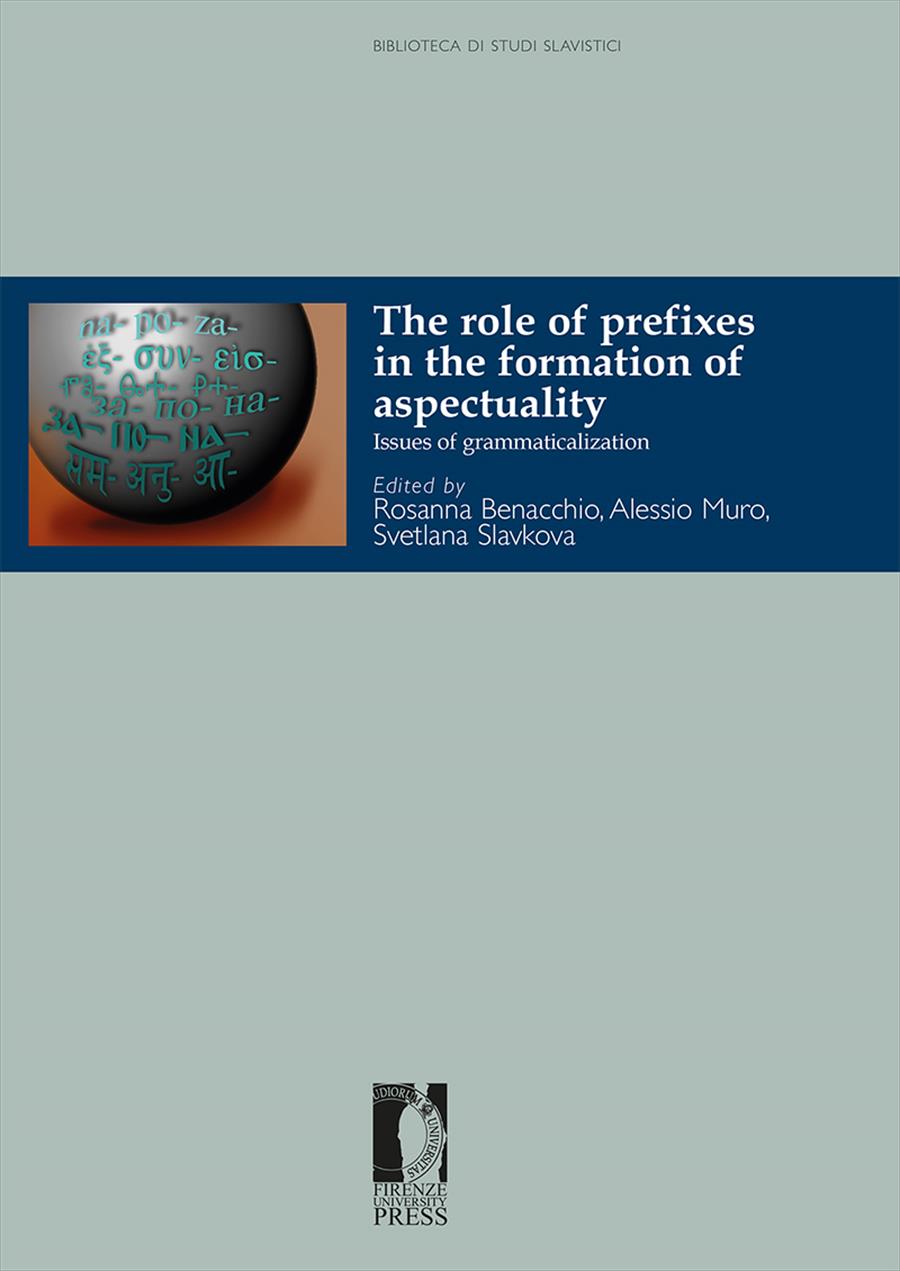- The role of prefixes in the formation of aspectuality
- Edited by Rosanna Benacchio, Alessio Muro, Svetlana Slavkova
On the dynamism of aspectual pair formation in Czech
- François Esvan
- © 2017 Author(s) |
- CC BY 4.0
- DOI: 10.36253/978-88-6453-698-9.08
This paper aims to analyze the relationship between. perfectivisation and secondary imperfectivisation in Czech. Recent data show for loan verbs a strong tendency, after a short phase of biaspectualism, towards the creation of aspectual pairs through perfectivisation, e.g. bukovat - zabukovat (to book). This step does not necessarily conclude the process, since secondary imperfectives like zabukovávat are also frequent. This development is in opposition to the tendency towards the elimination of secondary imperfectives, which characterized the historical evolution of the Czech language (Šlosar 1981).
- Keywords:
- Czech language,
- verbal aspect,
- word formation,
University of Naples L'Orientale, Italy - ORCID: 0000-0002-6978-7919
- Berger, T. 2011. “Perfektivierung durch Präfix im Tschechischen – vermeintliche und tatsächliche Besonderheiten”. Wiener Slawistischer Almanach, 67: 33-52.
- Esvan, F. 2005. “K vyhledávání sekundárních imperfektiv”, in Gramatika a korpus – Grammar & Corpora 2005. F. Šticha, J. Šimandl (eds.). Praha: 49-56.
- Esvan, F. 2007. Vidová morfologie českého slovesa. Praha.
- Esvan, F. 2010. Poznámky k adaptaci sloves cizího původu v češtině, in Karlík a továrna na lingvistiku. A. Bičan, J. Klaška, P. Macurová, J. Zmrzlíková (eds.). Brno: 125-137.
- Esvan, F. 2015. “Aspectual opposition in the different contexts of the historical present in Czech”, in Verbal Aspect: Grammatical Meaning and Context. R. Benacchio (ed.). München: 211-216.
- Jindra, V. 2008. “Vývojová dynamika obouvidových sloves cizího původu na základě korpusových dat”. Slovo a slovesnost, 69: 92-210.
- Komárek, M. 1984. “Prefixace a slovesný vid (K prefixům prostě vidovým a subsumpci)”. Slovo a slovesnost, 45: 257-267.
- Kopečný, F. 1956. “Les fonctions de la préfixation verbale en tchèque moderne”. Revue d’études slaves, 1-4.33: 84-97.
- Kopečný, F. 1962. Slovesný vid v češtině. Praha.
- Lebeďová, S. 1980. “K ztrátě obouvidovosti u sloves cizího původu v současné češtině”. Slovo a slovesnost, 41: 279-285.
- Poldauf, I. 1954. “Spojování s předponami při tvoření dokonavých sloves v češtině”. Slovo a slovesnost, 15: 49-65.
- Šlosar, D. 1981. Slovotvorní vývoj českého slovesa. Brno.
- Štícha, F. 2004. “Sekundární imperfektiva v současné češtině: systémovost, úzus, gramatičnost”, in Život s morfémy. Sborník na počest Zdenky Rusínové. P. Karlík, J. Pleskalová (eds.). Brno: 151-160.
- Uher, F. 1987. Slovesné předpony. Brno.
- Příruční slovník jazyka českého, 9 vol., Státní pedagogické nakladatelství, 1935-1957.
- Slovník spisovného jazyka.
Chapter Information
Chapter Title
On the dynamism of aspectual pair formation in Czech
Authors
François Esvan
Language
English
DOI
10.36253/978-88-6453-698-9.08
Peer Reviewed
Publication Year
2017
Copyright Information
© 2017 Author(s)
Content License
Metadata License
Bibliographic Information
Book Title
The role of prefixes in the formation of aspectuality
Book Subtitle
Issues of grammaticalization
Editors
Rosanna Benacchio, Alessio Muro, Svetlana Slavkova
Peer Reviewed
Number of Pages
272
Publication Year
2017
Copyright Information
© 2017 Author(s)
Content License
Metadata License
Publisher Name
Firenze University Press
DOI
10.36253/978-88-6453-698-9
ISBN Print
978-88-6453-697-2
eISBN (pdf)
978-88-6453-698-9
eISBN (xml)
978-88-9273-128-8
Series Title
Biblioteca di Studi Slavistici
Series ISSN
2612-7687
Series E-ISSN
2612-7679
